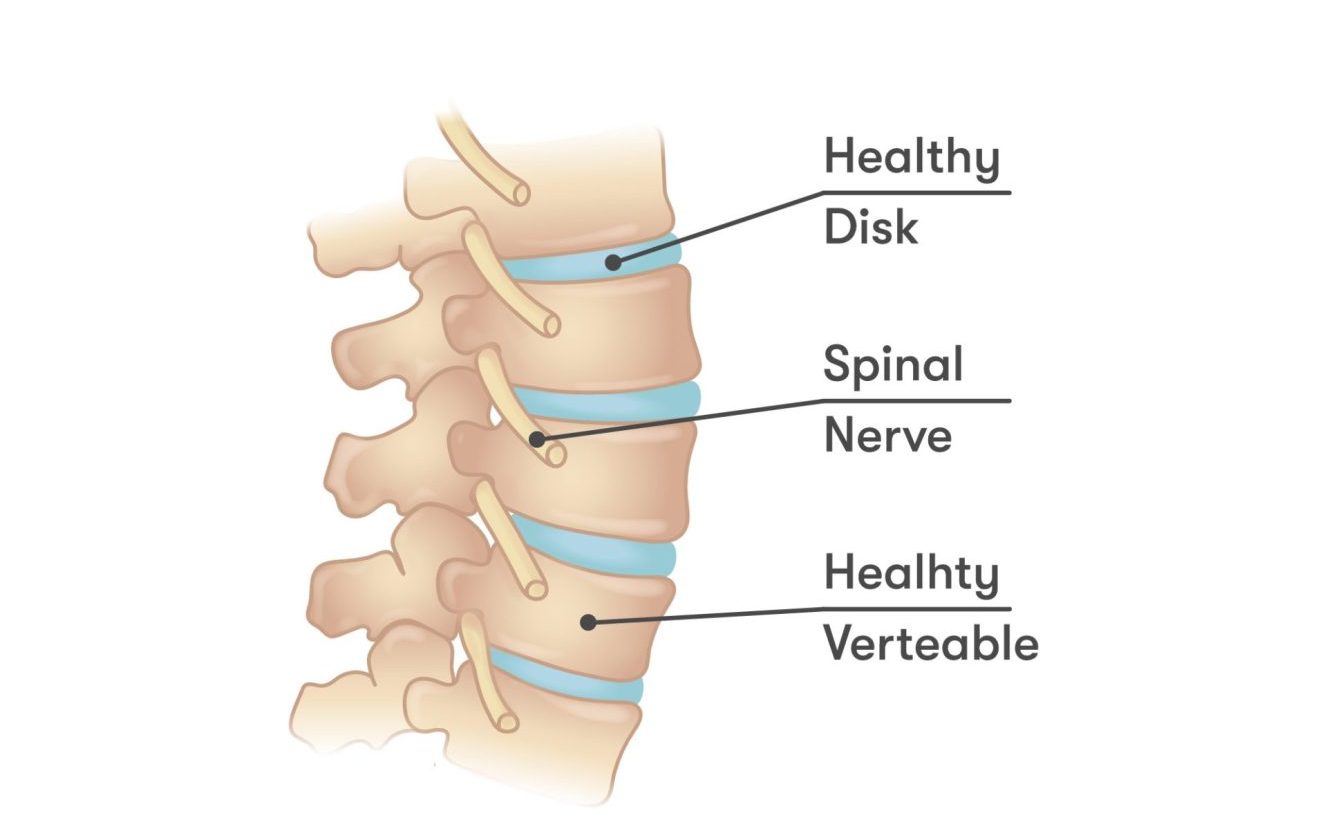Thoracic discogenic pain originates in the discs of the thoracic spine. The thoracic spine is located in the upper and mid-back, and it is made up of 12 vertebrae. The discs in the thoracic spine act as shock absorbers and allow pain-free movement. When a disc becomes damaged, inflamed or worn, it can cause pain. In more severe cases, the disc presses on nerve roots or the spinal cord.
Common causes of thoracic discogenic pain include prolonged poor posture, injury, or degenerative conditions. Symptoms of thoracic discogenic pain may include pain in the upper or mid-back, muscle spasms, and difficulty moving.
Treatment for thoracic discogenic pain typically involves a combination of physiotherapy, medications, and self-management strategies. Physiotherapy can help to reduce inflammation and improve flexibility and strength in the thoracic spine. Medications, such as nonsteroidal anti-inflammatory drugs (NSAIDs) and muscle relaxants, can help to manage pain and inflammation.
In addition to these treatment options, there are several self-management strategies that can help to reduce the symptoms of thoracic discogenic pain. These include:
Stretching exercises: Gentle stretching can help to improve flexibility and reduce stiffness in the thoracic spine.
Postural Correction: Maintaining good posture reduces both the strain on the thoracic spine and the risk of injury.
Hot and cold therapy: Applying heat or cold to the affected area can help to reduce pain and inflammation.
Applying the 5 stages of rehab to thoracic discogenic pain.
Pain – Pain and symptom reduction is best achieved by reducing inflammation and load through the thoracic discs. This may mean treatment is focused on other tissues to reduce pressure on the discs. In some cases medications may be required to reduce inflammation and settle symptoms. Supporting the spine with tape or braces can also be beneficial in the early stages to offload pain and to reduce the inflammation of the discs.
Range of motion – Thoracic disc pain can arise from stiffness in other parts of the body including the neck, lower back and hips. Improving mobility through these regions will help reduce the load on the thoracic spine. Stiffness through the thoracic spine is very common following a thoracic disc injury. This will result in a loss of movement in one or multiple directions. Movement through the thoracic spine is quite complex with multiple joint producing a combination of rotation, lateral flexion, extension and flexion to produce the desired movement. When one or more of the segments becomes dysfunctional it can alter the whole movement. Physiotherapy treatments and stretches will typically be effective to restore full range of motion.
Motor control – Learning to control where and when movement occurs and how to support the thoracic spine under high loads provides a safe healing environment for the disc. Most episodes of thoracic discogenic pain are associated with incorrect load distribution, resulting in excessive load and/or movement occurring at one disc.
Strength – Strength training the muscles and other soft tissues surrounding the spine builds the capacity to tolerate higher loads and functional demand, and reduces the likelihood of future injuries.
Maintain – A loss of range of motion, motor control or strength leaves the spinal tissues vulnerable to overload and injury. Maintaining an exercise program will ensure range of motion, motor control and strength gains are maintained and prevent the return of symptoms associated with thoracic discogenic pain .


